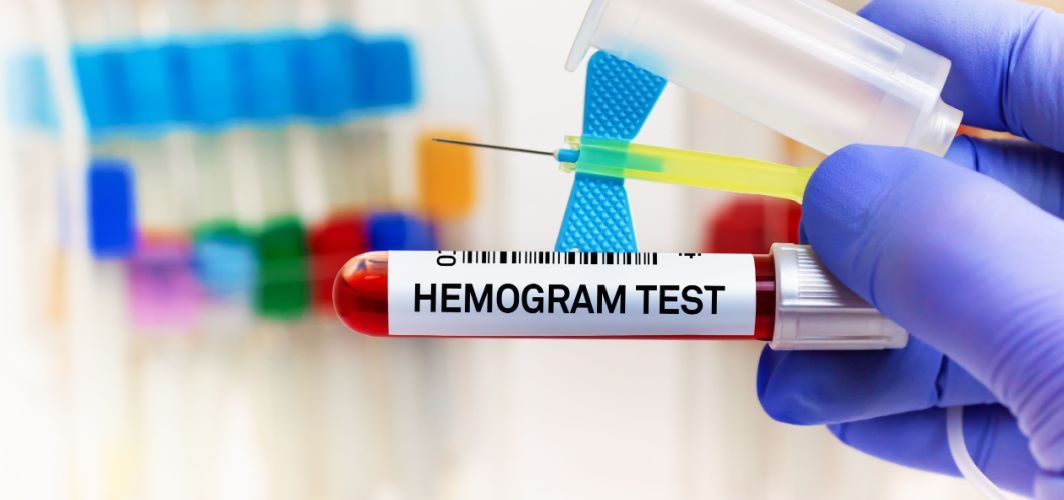General Health
Serum Creatinine Test: Interpreting Normal and Abnormal Ranges
5 min read
By Apollo 24|7, Published on - 08 January 2025
Share this article
0
0 like
.jpg?tr=q-80)
The serum creatinine test is one of the key laboratory tests used to assess kidney function. Creatinine is a byproduct of muscle metabolism, and under normal circumstances, it is filtered out of the blood by the kidneys. By measuring the creatinine levels in the bloodstream, doctors can gain insight into how well the kidneys are functioning. This article will guide you through the serum creatinine test normal range, what abnormal results might mean, and how variations in creatinine levels can indicate different health conditions.
What is the Serum Creatinine Test?
The serum creatinine test measures the concentration of creatinine in the blood. Creatinine is produced continuously by muscle cells and is excreted through the kidneys. Since the kidneys are primarily responsible for eliminating creatinine, high creatinine levels in the blood can indicate that the kidneys are not functioning properly.
While the serum creatinine test is not a specific test for any one disease, it serves as an important marker for kidney function, used to detect potential kidney dysfunction, monitor the progression of kidney disease, and evaluate the effectiveness of treatments for kidney conditions.
Serum Creatinine Test Normal Range
Creatinine levels can vary depending on various factors such as age, sex, and muscle mass. The following table outlines the serum creatinine test normal range, along with borderline, high, and low ranges for both creatinine and eGFR (estimated glomerular filtration rate), helping you interpret your test results accurately.
It’s important to remember that serum creatinine levels should be interpreted alongside tests like estimated glomerular filtration rate (eGFR) and a thorough assessment of the patient’s overall health.
Normal Creatinine Levels by Age
As we age, muscle mass typically decreases, leading to lower creatinine production. Additionally, kidney function may decline, resulting in variations in creatinine levels. Below are the typical creatinine ranges by age:
Creatinine Levels Chart: Interpreting Abnormal Results
To help interpret abnormal creatinine levels, here’s a useful creatinine levels chart that outlines different ranges and their possible clinical implications:
What Do Elevated Creatinine Levels Mean?
An elevated serum creatinine level may indicate that the kidneys are not functioning effectively. When the kidneys are unable to filter creatinine efficiently, it accumulates in the bloodstream. Causes of elevated serum creatinine can include:
- Chronic Kidney Disease (CKD): Chronic conditions like diabetes or hypertension can damage the kidneys over time, leading to CKD. High creatinine levels are a hallmark of this condition.
- Acute Kidney Injury (AKI): Acute kidney injury can result from a sudden event, such as dehydration, an infection, or an obstruction, causing a rapid rise in creatinine levels.
- Dehydration: Severe dehydration reduces the kidneys' ability to filter waste, causing creatinine levels to rise.
- Muscle Injury: Muscle breakdown (rhabdomyolysis) due to trauma or certain medical conditions can release large amounts of creatinine into the bloodstream, elevating serum creatinine levels.
- Heart Failure: In heart failure, reduced blood flow to the kidneys can impair function and lead to elevated creatinine levels.
What Do Low Creatinine Levels Mean?
Although less common, low serum creatinine levels can also occur. This may happen due to conditions that reduce muscle mass or impair the body's ability to produce creatinine. Possible causes of low creatinine levels include:
- Malnutrition or Low Muscle Mass: A low-protein diet or severe malnutrition can lead to reduced muscle mass, resulting in lower creatinine production.
- Pregnancy: During pregnancy, particularly in the second and third trimesters, creatinine levels may fall due to increased blood volume and enhanced kidney filtration.
- Liver Disease: Severe liver disease can impair the body’s ability to produce the proteins required for muscle growth, potentially leading to low creatinine levels.
Factors That Can Affect Creatinine Levels
Several factors can influence your creatinine levels, and understanding these can help provide a more accurate assessment of kidney function. Here are some key elements that can cause fluctuations in creatinine readings:
- Dietary Factors: A high-protein diet, especially one rich in red meat, can lead to a temporary increase in creatinine levels due to the higher breakdown of muscle tissue. These changes are usually short-term.
Physical Activity: Intense physical exertion or having greater muscle mass can raise creatinine levels. Since creatinine is a byproduct of muscle metabolism, more muscle mass typically results in higher creatinine production.- Hydration Status: Both dehydration and overhydration can affect creatinine measurements. Dehydration can concentrate creatinine levels in the blood, leading to falsely high readings. Conversely, excessive fluid intake can dilute creatinine levels, potentially resulting in inaccurately low readings.
- Medications: Certain medications, including non-steroidal anti-inflammatory drugs (NSAIDs), specific antibiotics, and chemotherapy drugs, may affect kidney function and cause elevated creatinine levels. Always inform your healthcare provider about any medications you're taking to ensure accurate interpretation.
- Age and Gender: As we age, muscle mass naturally declines, which can lead to lower creatinine levels in older adults. Additionally, men typically have higher creatinine levels than women due to their generally larger muscle mass.
- Medical Conditions: Chronic conditions such as diabetes, hypertension, and acute kidney injuries can all influence creatinine levels. Kidney disease, in particular, is closely associated with rising creatinine levels. Well-managed conditions may result in normal or stable readings.
Conclusion
The serum creatinine test is essential for assessing and monitoring kidney health. If you encounter abnormal results in your creatinine test or experience symptoms like fatigue, swelling, or changes in urine output, it's important to seek medical advice promptly. Elevated or low creatinine levels can indicate underlying health issues that need attention.
Take charge of your kidney health—schedule your serum creatinine test today and make proactive steps towards better health.
Book Serum Creatinine Test Now
General Health
Leave Comment
Recommended for you

General Health
Your Smartphone Can Be The Reason For Your Declining Health! Know How
Mobile phones are the need of the hour, however, they can lead to several health concerns. Read to know more about it.

General Health
Are You At Risk Of A Heart Disease? This Simple Test Can Say
A lipid profile test is a blood test that helps measure the levels of cholesterol and other fats in the body. Physicians use the test results to assess the risk of heart disease.

General Health
When To Get A Complete Hemogram Test?
Learn about hemogram tests and their importance in providing a complete and comprehensive analysis of your bloodwork and blood composition. Understand when to take these tests, the difference between hemogram and other CBC tests and how to interpret hemogram test results.
Subscribe
Sign up for our free Health Library Daily Newsletter
Get doctor-approved health tips, news, and more.
Visual Stories

Plant-based Foods That Are a Great Source of Iron
Tap to continue exploring
Recommended for you

General Health
Your Smartphone Can Be The Reason For Your Declining Health! Know How
Mobile phones are the need of the hour, however, they can lead to several health concerns. Read to know more about it.

General Health
Are You At Risk Of A Heart Disease? This Simple Test Can Say
A lipid profile test is a blood test that helps measure the levels of cholesterol and other fats in the body. Physicians use the test results to assess the risk of heart disease.

General Health
When To Get A Complete Hemogram Test?
Learn about hemogram tests and their importance in providing a complete and comprehensive analysis of your bloodwork and blood composition. Understand when to take these tests, the difference between hemogram and other CBC tests and how to interpret hemogram test results.